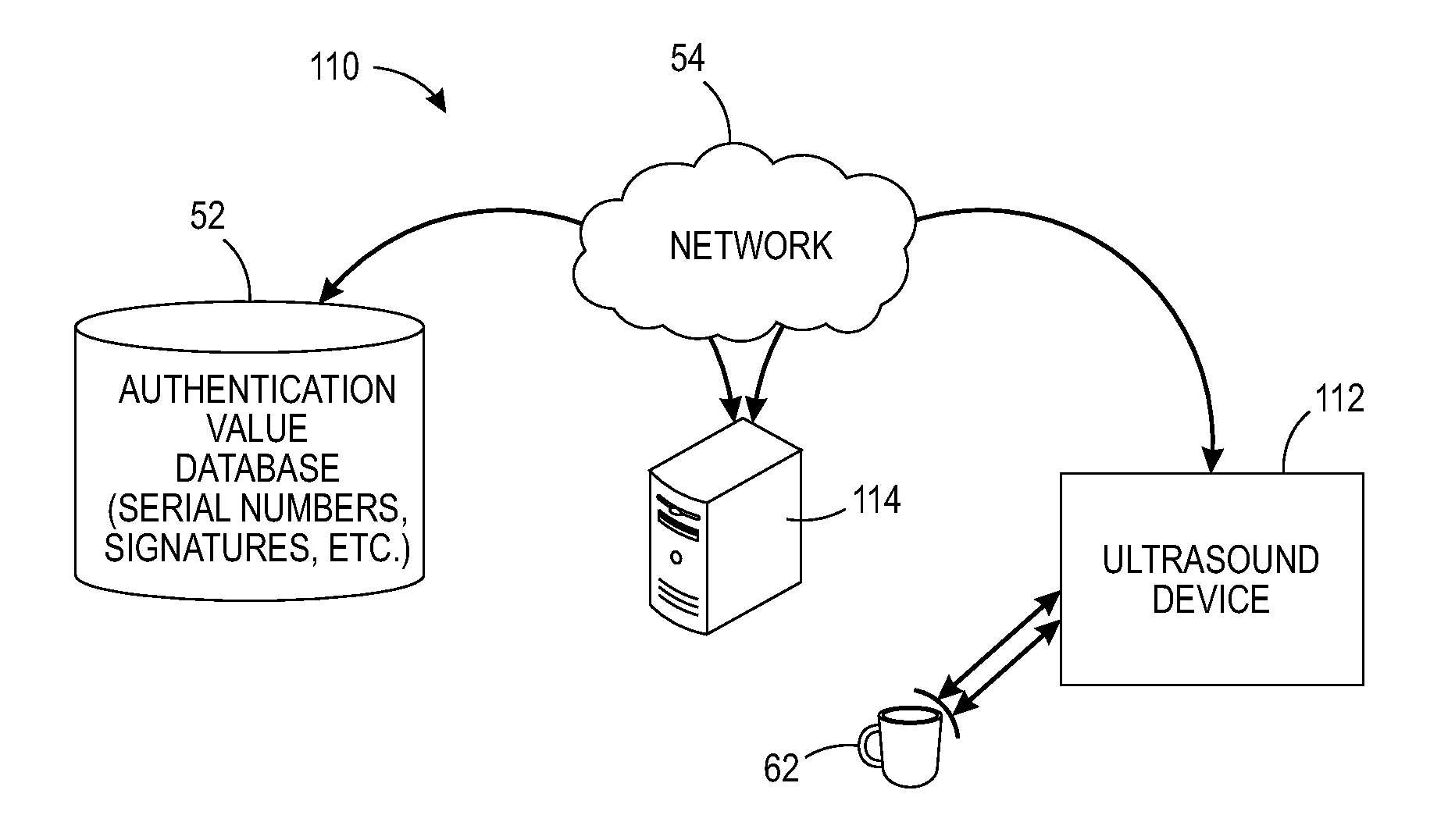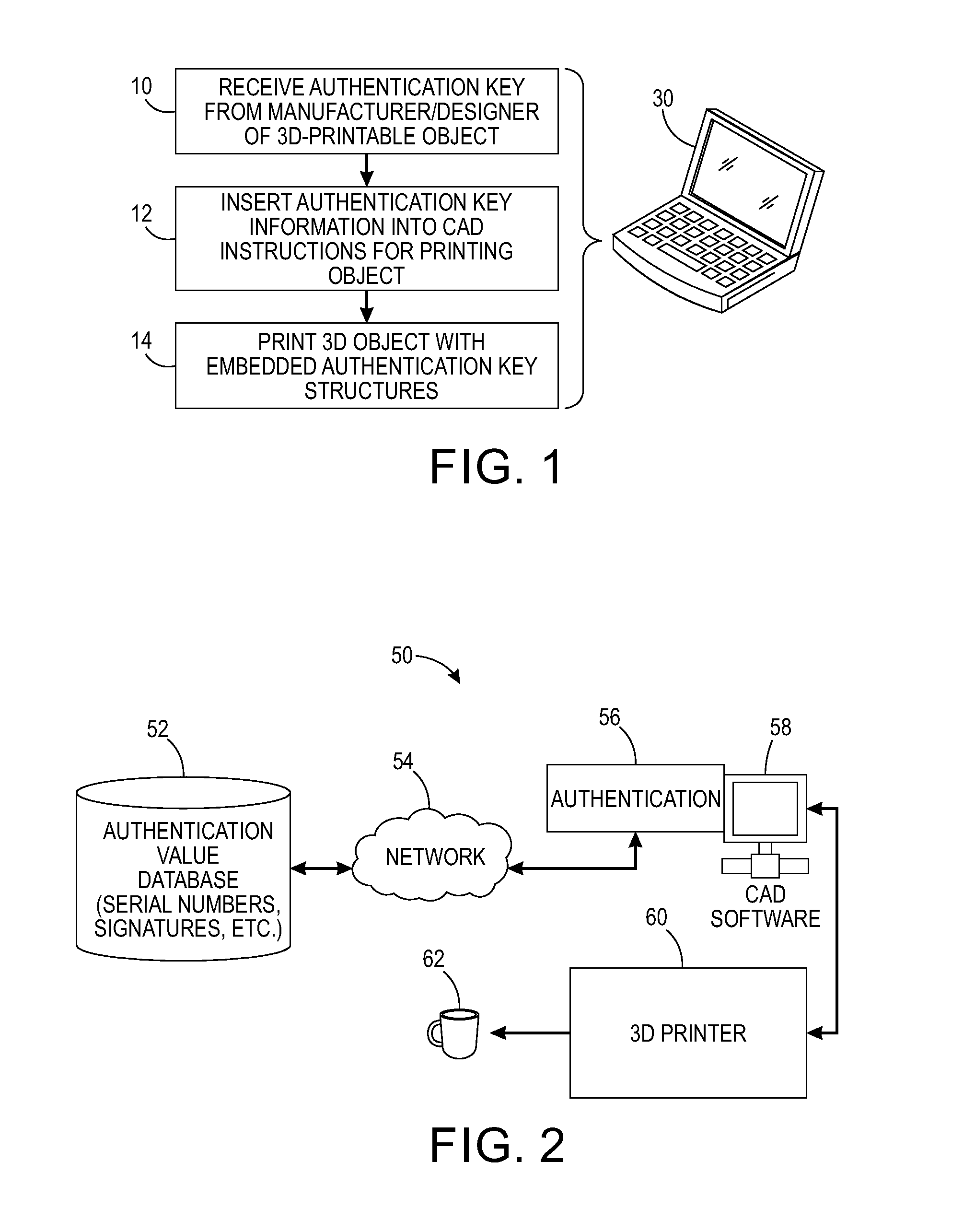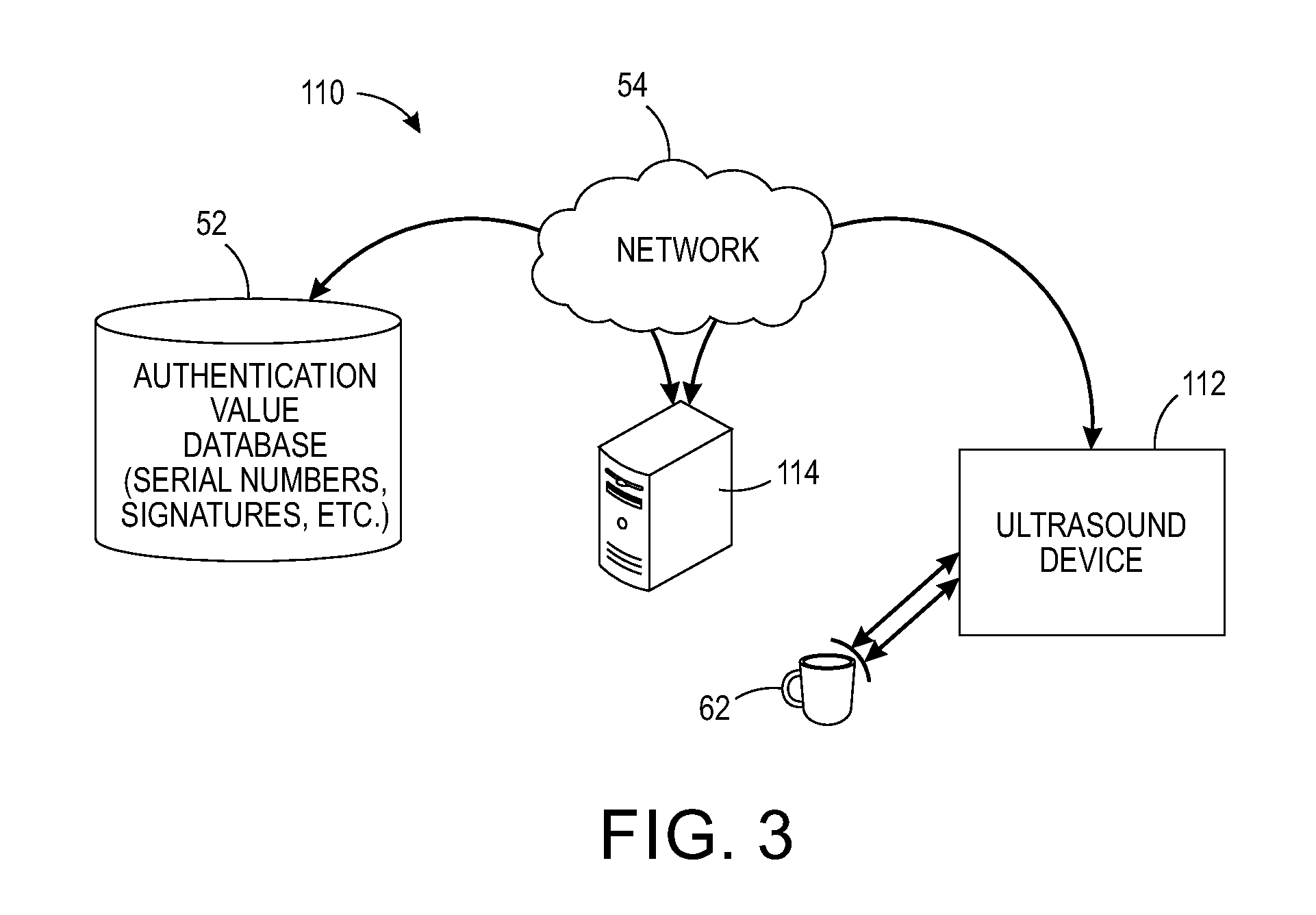System to authenticate 3D printed objects
a technology of 3d printing and object authentication, applied in the field of authenticating 3d printed objects, can solve the problems of increasing the potential for counterfeiting, affecting the music industry, and already affecting the counterfeit detection process, so as to facilitate encoding authentication information
- Summary
- Abstract
- Description
- Claims
- Application Information
AI Technical Summary
Benefits of technology
Problems solved by technology
Method used
Image
Examples
Embodiment Construction
[0015]The above-described problem is solved by providing a physical embodiment of digital security in a 3D printed object. The printed object itself (or part of the object) becomes its own public key. That is, the described systems and methods facilitate distinguishing between genuine and counterfeit objects by permitting authentication of objects manufactured using 3-dimensional printing technology.
[0016]FIG. 1 illustrates a method for physically representing a security feature in a 3D printed object, in accordance with one or more features described herein. At 10, authentication key information from a manufacturer or designer of a 3D-printable object is received or uploaded. At 12, the authentication key information is inserted into the code for printing the object. For instance, authentication information from a company that owns the object's design is inserted as an encrypted serial number and an encrypted signature as part of the object's design code. The encrypted serial numbe...
PUM
 Login to view more
Login to view more Abstract
Description
Claims
Application Information
 Login to view more
Login to view more - R&D Engineer
- R&D Manager
- IP Professional
- Industry Leading Data Capabilities
- Powerful AI technology
- Patent DNA Extraction
Browse by: Latest US Patents, China's latest patents, Technical Efficacy Thesaurus, Application Domain, Technology Topic.
© 2024 PatSnap. All rights reserved.Legal|Privacy policy|Modern Slavery Act Transparency Statement|Sitemap



